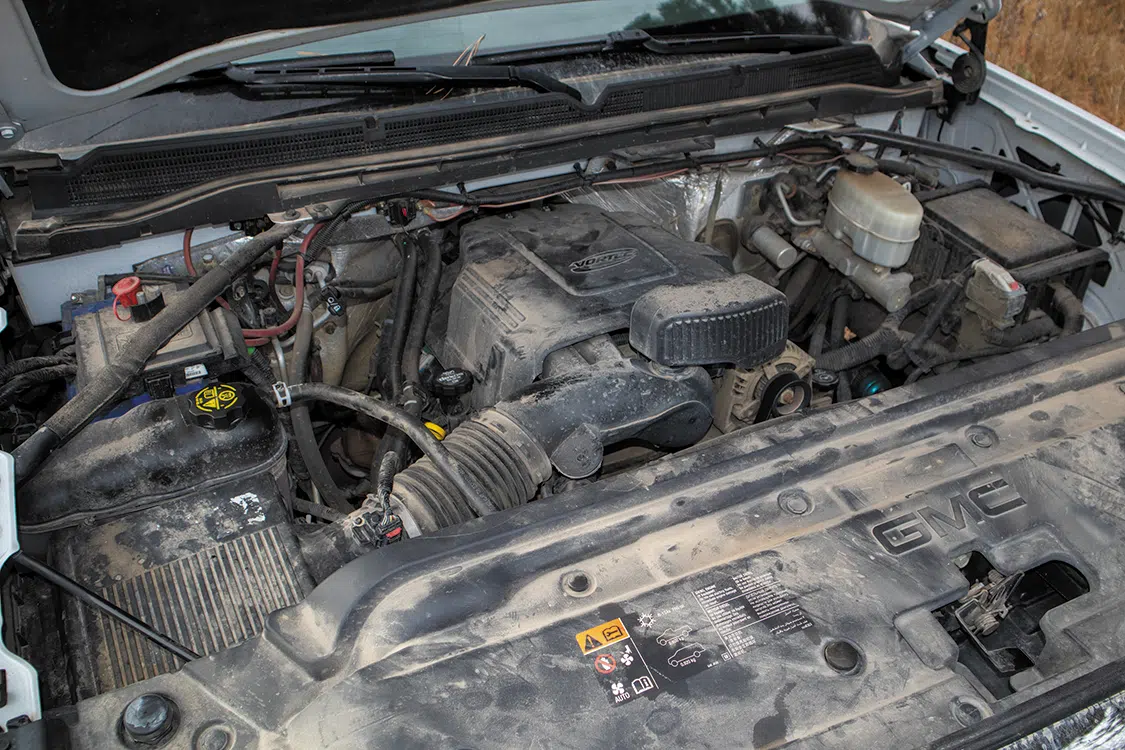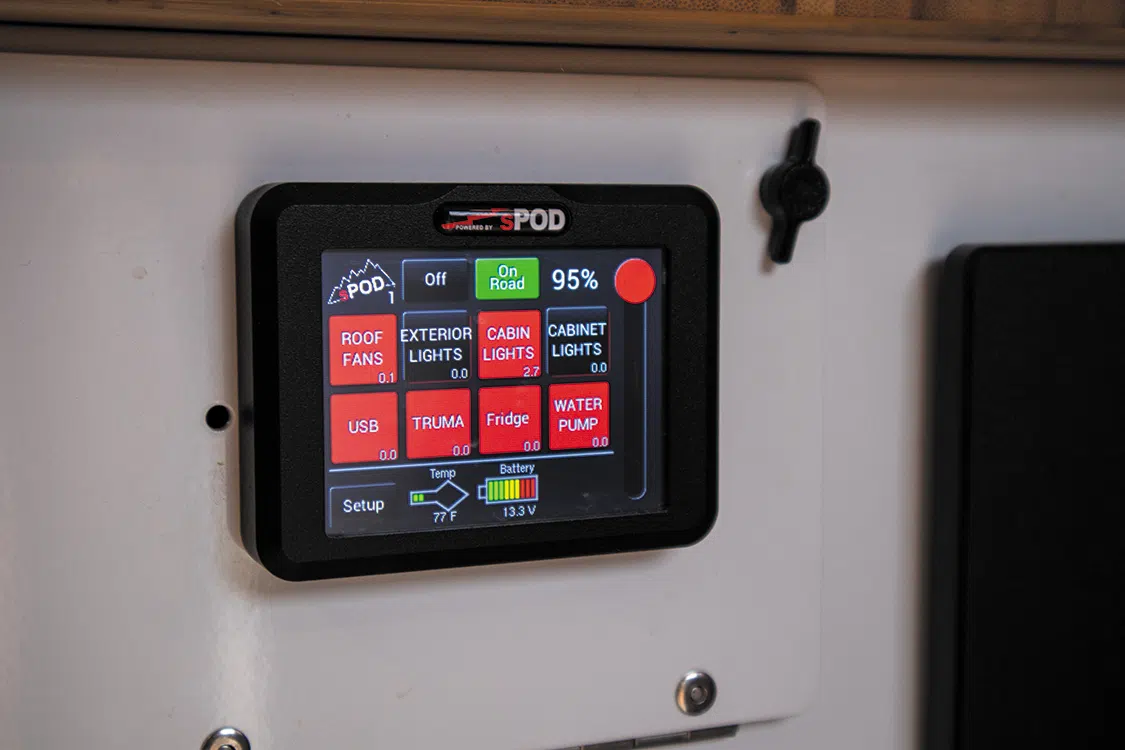 Harry Wagner
.
January 13, 2025
.
Feature Stories
Harry Wagner
.
January 13, 2025
.
Feature Stories

We often hear people ask what equipment they need to go overlanding, and the answer is always the same—just get outside! Spending time on the trail is the best way to determine what your needs are and what gear is important to you. After traveling down the Pan American Highway to Patagonia, KP Pawley has a pretty good idea of what is important to him and what he can leave behind. He has used his wealth of experience to build this truck, which he lives in full-time, and to help his customers at Zero Declination with their own needs for overland products and installation with a focus on solar, batteries, and electrical components.
“Diesel engines are great for towing heavy loads, but modern diesels are saddled with emissions such as diesel particulate filters and exhaust gas recirculation that increase temperatures and decrease long term reliability.”
People often purchase a camper for the truck they own. With mid-sized and half-ton trucks, it is easy to exceed the gross vehicle weight rating (GVWR) with the addition of accessories such as steel bumpers, a winch, and a slide-in camper.
“It is better to have too much truck than not enough truck,” said KP.
He started with a 2017 GMC Sierra 2500 that is rated to carry 3,400 pounds and was thoughtful about the upgrades he performed, while always keeping weight in mind.

Over the past 20 years we have seen truck cabs grow and the beds shrink as these vehicles are used more and more to haul people rather than put into service for work. Note that KP’s truck is a regular cab, longbed configuration. Living the single life, the regular cab has more than enough space and comfort for KP and a companion. It also keeps the overall length manageable for a variety of trails while providing plenty of room for a 6.75-foot OEV Hudson Bay camper and a storage locker behind the cab.
“Sourcing ultra low sulfur diesel or diesel exhaust fluid in Latin America can be a challenge. Add in the extra cost to purchase and maintain a diesel engine, and modern gas motors start to look pretty appealing.”


While Ford and Ram heavy-duty trucks come with solid axles front and rear, GM trucks come with independent front suspension (IFS) with torsion bars. This setup allows for the potential for better ride quality, but wheel travel is limited from the factory. KP unleashed that potential with the addition of a Kibbetech coilover conversion kit with CNC billet upper control arms fitted with 1.25-inch uniballs. The factory torsion bars are replaced with 2.5-inch diameter King coilover shocks with finned reservoirs and compression adjusters that net 9.5 inches of wheel travel.
“While Ford and Ram heavy duty trucks come with solid axles front and rear, GM trucks come with independent front suspension (IFS) with torsion bars.”

Diesel engines are great for towing heavy loads, but modern diesels are saddled with emissions such as diesel particulate filters and exhaust gas recirculation that increase temperatures and decrease long term reliability. Plus, sourcing ultra low sulfur diesel or diesel exhaust fluid in Latin America can be a challenge. Add in the extra cost to purchase and maintain a diesel engine, and modern gas motors start to look pretty appealing if you aren’t towing heavy loads on a regular basis. KP’s truck has a tried and true 6.0L gasoline V-8 engine that produces 360 horsepower and 380 lb-ft of torque and gets about 10 miles per gallon in the current configuration. It cost significantly less than a comparable truck with a Duramax engine, both in terms of the initial purchase and maintenance. KP had Axleline in Reno, Nevada, add 4.88 gears and a rear Detroit locker to provide additional traction and account for the 37-inch t Yokohama tires.
“KP unleashed that potential with the addition of a Kibbetech coilover conversion kit.”



KP used the money he saved by purchasing a regular cab, gasoline powered truck and invested in an OEV Hudson Bay flatbed camper.
“I have spent hundreds of nights in various different brands of pop-up campers,” he explained. “I can confidently say that the OEV campers are significantly warmer and better insulated than the rest. There is nearly no condensation inside after a night in sub-freezing temperatures.”


The OEV Hudson Bay uses composite panels on an aluminum frame that provide outstanding warmth in all seasons and a Truma propane furnace and on-demand water heater, making it a great choice for the extended ski trips that KP regularly enjoys. The camper weighs approximately 1,800 pounds before filling the 38-gallon fresh water tank— just half of the payload capacity for the truck. As the owner of Zero Declination, it isn’t surprising that KP has upgraded the electrical system with 200ah of Battle Born lithium batteries and 230w of Sol-Go flexible solar panels.


The camper is mounted on a custom flatbed that is simple and lightweight, with no additional drawers or compartments.KP noted that one of the reasons many flatbed campers are so high off the ground and have a big gap between the camper and the top of the cab is the use of a tray bed with a rear drawer that mounts between the frame and the bed, which raises the entire bed by the depth of the drawer. In front of the 6.75-foot OEV camper is a custom storage locker that KP designed specifically for his truck, but he has been collaborating with OEV on a similar model that should be available through their dealer network this summer.
KP previously traveled down the Pan American Highway with a regular cab, gasoline-powered truck with a Four Wheel Campers Grandby in the bed. He used everything he learned from that trip when building his current adventure vehicle, which also doubles as his full time residence. If that isn’t a testament to the function of this truck, we don’t know what is.
UPGRADES
2017 GMC Sierra 2500
OWNER:
KP Pawley
Engine: 6.0L V-8 gasoline engine
Suspension: Kibbetech coilover conversion w/ King remote reservoir shocks
Wheels & Tires: 37×12.50R7 Yokohama Geolandar M/Ts on factory steel wheels
Interior Accessories: RV backup camera, 200ah of Battle Born Lithium, 230w of Sol-Go flexible solar panels, Redarc Manager30
Exterior Accessories: Custom flatbed, OEV Hudson Bay camper, Zero Declination storage locker
Additional Modifications: 4.88 gears, Detroit locker, sPOD, Two Viair 485C compressors
Editor’s Note: A version of this article appeared in TREAD July/August 2024
We use cookies to enhance your browsing experience, serve personalized ads or content, and analyze our traffic. By clicking "Accept All", you consent to our use of cookies. Visit our Cookie Policy for more info.
Notifications
Share Link